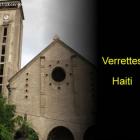ADVERTISEMENT
Fabre Geffrard - Haiti Observer Blog
Fabre Geffrard, Haiti Observer Blog. Read the following articles about Fabre Geffrard
Fabre Geffrard allowed African-Americans to settle in Haiti
Guillaume Fabre Nocolas Geffrard or simply Fabre Geffrard was the 10th President of Haiti who sworn in as the head of the Republic in 1859 and stayed in power till 1867. Few of his important achievements include placating peasants through revival of state-owned land selling practice and he also ended the differences with Roman Catholic Church. As the schism was erased, the Roman Catholic Church eventually played a very crucial role in improving the education system in Haiti.
The first thing Fabre Geffrard did after coming to power was that he reduced the army size from 30,000 to its half at 15,000 and at the same time created presidential guards who were trained by Fabre Geffrard himself. In 1859, the National Law School was founded by him and the Medical School started by Boyer was reinstituted. Several lycea were established and modernized by his two ministers François Elie-Dubois and Jean Simon Elie-Dubois. In 1863, the colonial rule of building and maintaining roads were reintroduced. In 1861 African-Americans were allowed to settle in Haiti.
Faustin Soulouque, Haiti Monarchy
Faustin-Élie Soulouque was ushered into office as Haiti's 9th President in 1847. He was installed by advocates of the Boyerist movement as a figurehead ruler. But he soon rebelled, staging a coup against his supporters and turning his government into a dictatorship. Faustin ensured his totalitarian rule through devotion of a citizen militia, and finally persuaded Parliament to crown him Emperor of Haiti in 1849.
As emperor Faustin-Élie Soulouque ruled with a centralist government and created a black nobility with dukes, marquis, counts, barons, and nobles of lower rank. He formed military, civil, and religious orders, and created a Royal Academy of Art.
Role, Term of Haitian Presidents from Haiti Independence to 2013
The Haitian government is led by a president, who shares his/her executive power with the prime minister. Once elected by popular vote, the president will run the country for five years. After the term, the president could not run in the next election. He/she has to wait for five years in order to seek a second term. Haiti presidents can only serve for a maximum of two terms.
Not everyone can run for president as there are certain qualifications and requirements to be eligible for the seat. Only candidates with Haitian citizenship by birth can run for the position, as well as those who are at least 35 years of age. Jail sentence, loss of civil rights and lack of property ownership and residency can make a candidate ineligible to assume the position.
Anse-a-Veau in Nippes Department
Within the Department of Nippes, sits the Anse-à-Veau Arrondissement. Five hamlet-like villages comprise Anse-à-Veau: Arnaud, L'Asile, Petit-Trou-des-Nippes, and Plaisance-du-Sud.
Anse-à-Veau has a population estimated to be between 31,000-55,000. Founded in 1721 as a cityship, it lies below left of Ile Gonave and an inlet of the Caribbean Sea. Three sub-divisions make up Anse-à-Veau: Grande-Rivière-Joly, Sault-des-Baril-Moinsard, and Baconnois-Grand-Fond.
Following Haiti's magnitude 7.0 2010 earthquake, which reduced most of Haiti to rubble, thousands upon thousands of Port-au-Prince survivors overflowed Anse-à-Veau, severely straining its people and services.
Anse-à-Veau's main income-producing activities are agriculture and fishing. Farmlands produce coffee, sugarcane, lemons, and oranges, and use sustainability practices. Cotton-growing also takes place. The small-craft fishing industry plies its trade along Anse-à-Veau's coastline.
Our objective is to share with you news and information about Haiti and the people of Haiti. Traditions, habits and the way we were or grew are alive in this site. We highly recommend that you Subscribe to our Newsletter and also share with us some of the things that are memorable and made us unique people.

 Lascahobas, Haiti
Lascahobas, Haiti  Saint Michel de L 'Atalaye
Saint Michel de L 'Atalaye  Newsletter
Newsletter  Haiti tech Summit
Haiti tech Summit  Verrettes, Haiti
Verrettes, Haiti